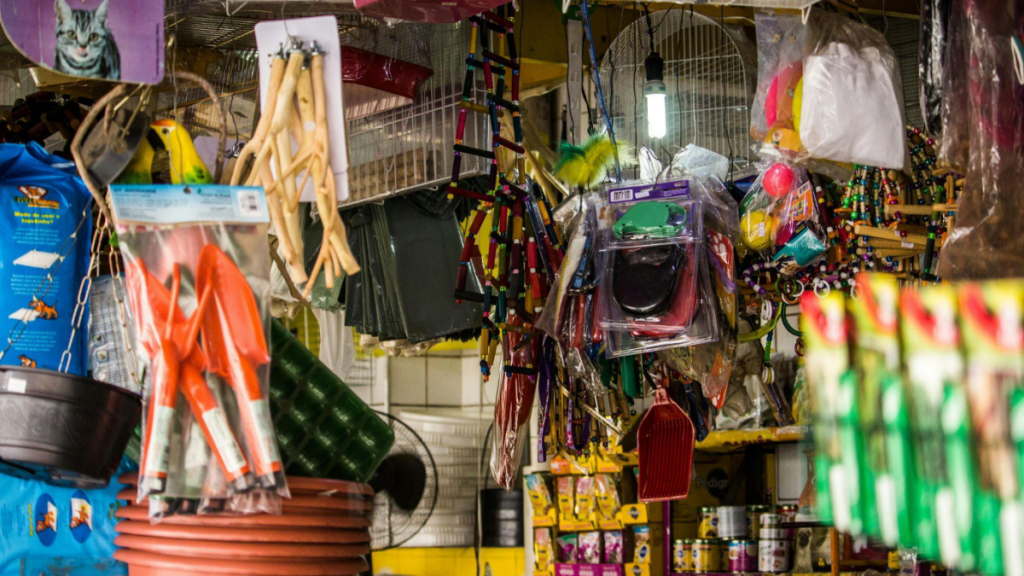The pet industry has surged in recent years, with e-commerce reshaping how people acquire pet products. From food to accessories, health supplies to niche goods, online platforms have opened vast new possibilities for pet owners, upending the traditional dynamics of this thriving sector.
In this piece, we will examine how e-commerce has upended the pet product market, the forces steering this shift, and what the future holds for businesses in this space.
The Surge of Pet E-commerce
As consumer habits evolve, e-commerce has become a powerful force across industries, and the pet product market follows suit. According to Grand View Research, the global pet care market reached $232 billion in 2022, with online sales capturing a growing slice. This rise in online pet shopping aligns with the broader demand for digital ease, where buyers value speed, variety, and time-saving options.
Several drivers propel this growth. The pandemic hastened the shift to online purchases. Lockdowns and distancing led consumers to turn to e-commerce, sparking a surge in demand for pet products delivered directly to their doorsteps.
Subscription-based models and direct-to-consumer (DTC) businesses further spurred consistent growth by offering automatic deliveries of recurring items like food and health supplies.
Ease and Personalization
Pet owners have flocked to e-commerce largely for its convenience. Previously, acquiring pet products meant visiting physical stores, which consumed time and offered limited selections. Online shopping, however, lets owners browse an expansive range of goods, compare prices, and examine reviews at any hour. This is especially valuable for owners with tight schedules, who need quick access to essentials without leaving home.
Additionally, e-commerce has unlocked new levels of personalization in the pet product market. Many online stores now offer tailored recommendations based on the breed, age, or dietary needs of pets.
Subscription boxes curate toys, treats, and food designed for individual pets’ preferences, boosting customer satisfaction and loyalty as owners feel products are crafted specifically for their animals.
Personalization extends beyond subscription boxes. Many retailers offer options for customized pet items like engraved collars, custom tags, and monogrammed beds. These unique products allow owners to express their bond with their pets in personal, creative ways, which fuels the shift to e-commerce for hard-to-find specialty items.
Expanding Product Range and Reach
E-commerce has revolutionized the pet product market by broadening the range of available products. Physical retail stores are limited by shelf space, which restricts product offerings. On the other hand, online platforms such as RPBA shop, face no such limitations, enabling them to stock a vast array of goods. This has led to a boom in niche pet products that cater to specific needs, preferences, and lifestyles.
For instance, eco-friendly pet products, such as biodegradable waste bags, organic treats, or sustainably sourced foods, have become much easier to find. Specialized items like grain-free diets, allergy-specific foods, and breed-specific products are also more accessible through e-commerce. This variety enables pet owners to make more thoughtful choices about their pets’ health, selecting from a broader range of options that fit their specific needs.
Accessibility has also improved dramatically with the rise of e-commerce. Pet owners in rural or remote areas, once limited to local selections, can now easily order specialty products online. This inclusion allows consumers in different regions to enjoy the same variety as those in urban areas, further driving the appeal of online pet shopping. E-commerce has effectively bridged the gap between urban and rural markets, giving all pet owners access to high-quality products.
Technology’s Role in Pet E-commerce
Technology has shaped the future of pet e-commerce, offering businesses new ways to engage customers and improve their shopping experiences. One of the most significant developments has been artificial intelligence (AI) and data analytics. Through AI, platforms analyze customer behavior and preferences to provide personalized recommendations, crafting a seamless experience that feels custom-made for each owner’s needs.
For example, platforms like Chewy or Amazon use AI to suggest products based on past purchases, browsing habits, and reviews from similar customers. This personalized approach ensures owners can find exactly what they need without sifting through unrelated items. AI-driven recommendations also help businesses build stronger relationships by creating a shopping experience that feels intuitive and responsive to their needs.
Augmented reality (AR) is another emerging technology transforming the pet e-commerce landscape. AR allows consumers to visualize products before buying. Some websites now offer AR tools that let owners see how a dog bed might fit in their living room or how a pet collar looks on their pet virtually. This interactive experience reduces uncertainty and boosts confidence in online purchases.
Advances in mobile technology have also made shopping more convenient. Many e-commerce platforms now offer mobile apps that streamline the shopping process, allowing users to manage subscriptions, track deliveries, and order with just a few taps. This mobile-first approach ensures pet owners can access essential products from anywhere, further fueling the rise of e-commerce in this market.
Future Outlook and Conclusion
As the pet product market continues to evolve, e-commerce will remain central to its growth. The integration of advanced technologies like AI, AR, and mobile apps has transformed how consumers engage with pet products, offering unprecedented convenience, personalization, and variety. Moreover, the rise of niche and health-focused products will further anchor e-commerce as a key player in the global pet market.
Emerging trends such as sustainability, health-centric products, and innovative subscription models will strengthen e-commerce’s role in the pet industry. Businesses that embrace these shifts, harness new technologies, and meet consumer demands for convenience and customization will thrive in this competitive landscape.
In the end, e-commerce has not only changed how pet owners shop but has reshaped the pet industry itself, creating a more connected and customer-focused marketplace. As the pet-loving community expands, opportunities within e-commerce will continue to grow, offering businesses and consumers exciting new ways to care for and connect with their pets.




